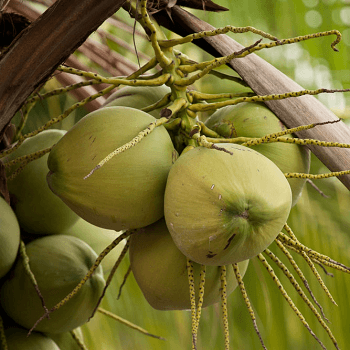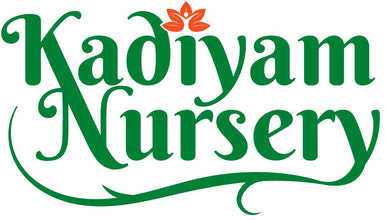-
Fruit Plants, Palms and Cycads, Trees, Medicinal Plants
- Family:
- Palmae or Coconut family
-
1. Introduction and Information
Ganga Bondam Coconut Tree is a high-yielding dwarf variety of coconut, known for its fast growth, early fruiting, and high-quality coconuts. This variety is resistant to pests and diseases and is widely cultivated in tropical and subtropical regions for its multiple benefits.
2. Plantation
-
Location: Choose a sunny location with well-draining soil, preferably sandy loam or loamy soil with a pH between 5.5 and 7.0.
-
Spacing: Plant the seedlings at least 25 feet apart to provide sufficient room for growth.
-
Planting Depth: Dig a hole about 1-2 feet deep and wide enough to accommodate the seedling's root ball. Place the seedling in the hole and fill it with soil, ensuring the collar is at ground level.
3. Growing
-
Watering: Water the young plants regularly, especially during the first year. Mature trees require less frequent watering but still need consistent moisture.
-
Fertilization: Apply a balanced fertilizer (NPK ratio of 8:4:12) quarterly to encourage healthy growth and fruit production.
-
Mulching: Apply a 2-4 inch layer of organic mulch around the base of the tree to conserve moisture and control weeds.
4. Care
-
Pruning: Remove dead, diseased, or damaged fronds to maintain tree health and appearance. Prune fruit stalks once the fruits have been harvested to encourage new growth.
-
Pest Control: Inspect the tree regularly for pests like mealybugs, scale insects, and mites. Apply appropriate insecticides or biological control methods as needed.
-
Disease Prevention: Monitor the tree for signs of fungal or bacterial infections. Implement proper sanitation and cultural practices to minimize the risk of disease.
5. Benefits
-
Economic Benefits: Ganga Bondam coconut trees have high economic value due to their early fruiting, high yield, and low maintenance.
-
Culinary Uses: The coconuts can be consumed fresh, processed into coconut milk, oil, or flour, or used to make sweets and other dishes.
-
Environmental Benefits: Coconut trees help prevent soil erosion, provide habitat for wildlife, and absorb carbon dioxide from the atmosphere.
-
Health Benefits: Coconut water is a natural electrolyte-rich drink, while the oil and milk are rich in healthy fats and antioxidants.

